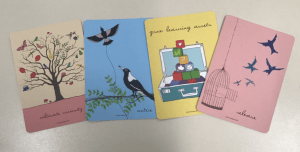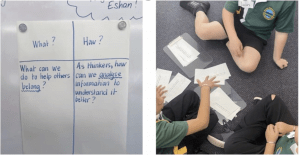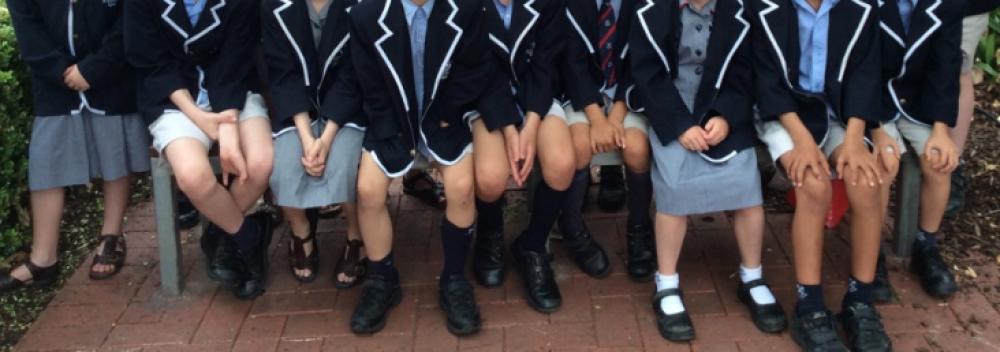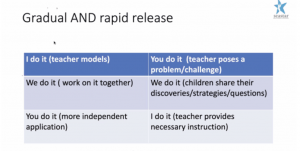Tuesday 15th March, 2022. Whole Day Staff PD (Pupil Free Day)
Today we began our St Andrew’s inquiry journey with Kath Murdoch! To say I am excited is an understatement! I wrote five pages worth of notes (sadly, I’m not kidding!). Here is a summary of the day and my key take aways that I think are worth sharing.
Cannot wait to continue the process together as a staff. There were so many wonderful moments from today’s PD, it is impossible to document them all. I will say that it felt like having professional conversations with a friend, everyone was open minded, eager to contribute and passionate about the topic at hand. Aren’t we lucky to have such a great opportunity to work with great minds.
What is Inquiry?
Kath described inquiry as such, “The essence of inquiry is absolutely about wonder, curiosity and seeking answers to our questions”. Inquiry is a way of being, a stance. It is not a subject or a lesson. Inquiry is a sustained, perpetual curiosity. Cultivate this curiosity.
What does inquiry based learning mean to you? (my reflection)
- Discovering answers to our questions
- Exploring ideas, questions and concepts
- Forming understandings through an inquiry process
Lessons from today’s session:
These were four of the practices for inquiry teaching and learning that we focussed on today. These come from Kath Murdoch’s The Art of Inquiry cards.
 Cultivating Curiosity: When do we give children the opportunity to share their curiosity and wonderings? Not just classroom topical wonderings, their life wonderings. What materials and opportunities do we provide in our classrooms to spark that curiosity? Try to be that genuine person who shows interest in their curiosities and share your own curiosities.
Cultivating Curiosity: When do we give children the opportunity to share their curiosity and wonderings? Not just classroom topical wonderings, their life wonderings. What materials and opportunities do we provide in our classrooms to spark that curiosity? Try to be that genuine person who shows interest in their curiosities and share your own curiosities. - Notice: The practice of noticing, it is such a significant part of the inquiry teachers repertoire. If I stay curious I am better at noticing. What helps us to notice? Slowing down, observing, taking time to have individual conversations with students. Have space to get inside student thinking.
What gets in the way? Over planning, noticing but not having time to dig deeper or address this.
- Grow Learning Assets: Changing the word “work” to “learning”. “We need to finish our work: becomes “We need to continue with our learning”. Creating an awareness of building a learning toolkit, developing skills for learning and focusing on those Approaches to Learning in our inquiry journey. Using the What & How Method (see below)
- Release: We need to release responsibility, give students the opportunity to do the heavy lifting themselves. Who owns the learning? Children have the right to own their own learning. Be responsive to those moment in your classroom. Give yourself permission to go with the flow. What can I release myself from? What do I leave behind and how can I move forward? What will best serve my students? I owe it to myself and my students to release.Flipping the gradual release model to rapid release.
The practice I will be focussing on first is “Grow Learning Assets” but I was also very much drawn to “Release”. One step at a time! Slow down.
Grow Learning Assets and the What? & How? Method. 
The what is what we are learning about, the how is an approach to learning skill.
Eg. What: What can we do to help others belong? How: As thinkers, how can we analyse information to understand it better.
I will use the What and How method to actively engage my students in their awareness in their learning and inquiry process.
I work in small groups or 1:1 with EAL/D students. I wonder, in a classroom setting is it easier to release? When working in small groups for language intervention and support, we have goals for our non-English speaking learners, based on their lack of language and communication skills, we need to assist and model a lot of the language and learning. How can I employ more of my inquiry based teaching skills in what I do?
I already use a play-based approach. Usually I set up a provocation or something to play with that will naturally encourage conversations and play. These playful scenes usually mirror their own classroom settings, or units of inquiry to help front load some vocabulary. From here we introduce new vocabulary and practise saying new words, sentences and phrases that accompany that type of play. I play alongside the learner and model the language. This is a starting point and I am eager to explore this further in our future sessions with Kath.
Exciting times at St Andrew’s.
Until the next session.

